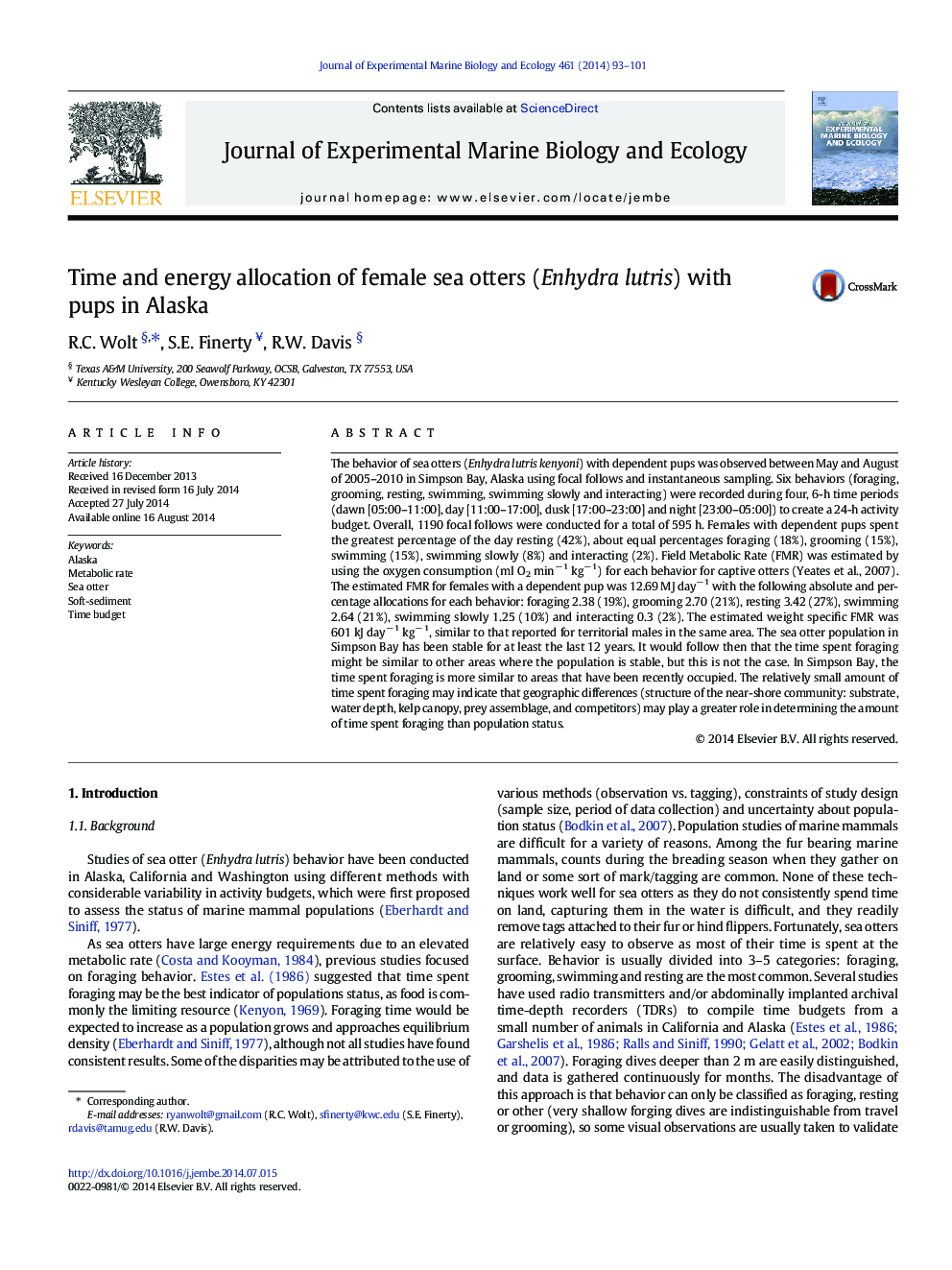| Article ID | Journal | Published Year | Pages | File Type |
|---|---|---|---|---|
| 6303912 | Journal of Experimental Marine Biology and Ecology | 2014 | 9 Pages |
â¢1190 focal follows were conducted to create a 24-h activity budget.â¢Resting 42%, foraging 18%, grooming 15%, swimming 23%, and interacting 2%â¢Estimated FMR: 12.68 MJ dayâ 1, and weight specific FMR: 601 kJ dayâ 1 kgâ 1â¢Geographic differences may influence activity budgets more than population status.
The behavior of sea otters (Enhydra lutris kenyoni) with dependent pups was observed between May and August of 2005-2010 in Simpson Bay, Alaska using focal follows and instantaneous sampling. Six behaviors (foraging, grooming, resting, swimming, swimming slowly and interacting) were recorded during four, 6-h time periods (dawn [05:00-11:00], day [11:00-17:00], dusk [17:00-23:00] and night [23:00-05:00]) to create a 24-h activity budget. Overall, 1190 focal follows were conducted for a total of 595 h. Females with dependent pups spent the greatest percentage of the day resting (42%), about equal percentages foraging (18%), grooming (15%), swimming (15%), swimming slowly (8%) and interacting (2%). Field Metabolic Rate (FMR) was estimated by using the oxygen consumption (ml O2 minâ 1 kgâ 1) for each behavior for captive otters (Yeates et al., 2007). The estimated FMR for females with a dependent pup was 12.69 MJ dayâ 1 with the following absolute and percentage allocations for each behavior: foraging 2.38 (19%), grooming 2.70 (21%), resting 3.42 (27%), swimming 2.64 (21%), swimming slowly 1.25 (10%) and interacting 0.3 (2%). The estimated weight specific FMR was 601 kJ dayâ 1 kgâ 1, similar to that reported for territorial males in the same area. The sea otter population in Simpson Bay has been stable for at least the last 12 years. It would follow then that the time spent foraging might be similar to other areas where the population is stable, but this is not the case. In Simpson Bay, the time spent foraging is more similar to areas that have been recently occupied. The relatively small amount of time spent foraging may indicate that geographic differences (structure of the near-shore community: substrate, water depth, kelp canopy, prey assemblage, and competitors) may play a greater role in determining the amount of time spent foraging than population status.
